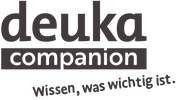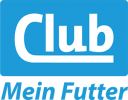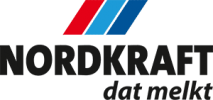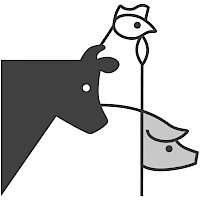How to get a traineeship - Part 2
Presenting confidently and authentically in the job interview
Congratulations! You have been invited to an interview. The first hurdle on the way to your new training position has been cleared. Now the interview awaits. Whether digital or in person, the very thought of the intimate interview situation gives many a stomachache. But that doesn't have to be the case. With the following tips and a little preparation, an interview can be mastered without any problems.
The interview is an important part of the recruitment process for new trainees. This is the first time that the applicant and the recruiter meet directly. The main purpose of the meeting is to get to know each other personally. It is only during this interview that it becomes clear "whether the chemistry is right" and whether the applicant and the company can imagine spending the next few years together.
The job interview is more harmless than its reputation. And yet it is the most exciting part of the application phase. If you are well prepared, it is easier to present yourself in a relaxed, confident and authentic manner. The following list will help you prepare for this important appointment.
With tips & tricks safely through the job interview
-
"Preparation is half the battle," as the saying goes - and this is especially true when it comes to job interviews. By researching the potential employer well, applicants show interest in the training offered by the company. In which industry does the company operate? What products does it manufacture? Who are its customers? What are the company's values and goals, etc.? To get answers, the website is the first place to go.
-
First impressions count. If you are late for the first meeting, you will usually not be remembered well. If the interview takes place on site, plan your journey by car, bus or train in good time. Always allow for a generous time buffer. After all, unforeseen events usually happen when you need them least. If you have the opportunity, it can't hurt to drive the route. If you are traveling by car, make sure there is parking available on site. Where is the entrance? Who do I need to check in with upon arrival? Do I have the contact details of my contact person? - It is best to go through the whole process in your head beforehand. The more you think about, the less you can be surprised by.
If the call takes place online, set a reminder on your cell phone and check the Internet connection, camera and microphone early on. Use a quiet room for the conversation and make sure you won't be disturbed. If necessary, it doesn't hurt to clean up just beforehand. Log on in good time.
-
Your outfit is your visual business card. The clothes for the interview are ideally clean and neat. Think about the job you are applying for and what clothing is appropriate for it (you need to feel comfortable in it; it's the only way to be natural). You can find a comprehensive checklist for choosing the right clothes here.
-
After a few introductory words, interviews usually begin with a self-presentation by the applicant. This is primarily about you as a person. "Why did you apply?" or "What particularly interests you about the advertised position?" are questions that interest your interviewer above all. Include practical experience and professional qualifications in your introduction. Anything that is directly related to the training position is valuable and welcome here. However, it's not a good idea to recite the previous stages of your resume - after all, your resume is already available to your interviewers.
-
"Where do you see yourself in five years?", "What are your strengths?", "What do you value friends and colleagues for?" Everyone has heard of them, many dread them. Stressful questions are part of a job interview like salt in the proverbial soup. The questions are designed to help your interviewers learn more about you. The questions are designed to elicit unprepared answers from you. In this way, they hope to get to know you a little better.
When preparing for the interview, you will want to research quick-witted answers to stressful questions. Don't do this. It's important that you remain authentic during the interview. Think of the preparation as a welcome opportunity to consider what you want out of life and your new job. It's what's important to you that counts here. If you only give prefabricated answers to stressful questions in order to shine, you are not being honest and are creating false expectations.
-
The interview is not just a test of your suitability for the new job. While your interviewers want to know who you are and whether it is a good idea to hire you, the same is true for you. After all, you too want to know where and with whom you will be working for the next few years. So use the interview to ask yourself questions and find out more about your new job, your colleagues and the profession. What do you need to know in order to respond with a clear "Yes!" to a contract offer with a clear conscience? Now is the time to ask these questions.
Tips against nervousness in the job interview
Nervousness and insecurity show up differently in everyone. While some fold their arms or bite their nails, others rock their chair or avoid direct eye contact. If you take the advice in this article to heart, you have already done a lot to combat your nervousness. But if you're still overcome by it, some of the following tips may help:
- Preparation against insecurity
Stage fright usually comes when you are uncertain. Simulating the interview situation once in a safe environment - together with parents, friends or acquaintances - can work wonders. Another advantage: Your practice partners can give you direct feedback and suggestions for improvement. - Exercise has a calming effect
Take a short walk before the interview. Get some fresh air, ideally in a park or on the shore of a body of water. Anything that calms you down is just fine now. - Caffeine - no thanks!
Coffee, black tea and energy drinks perk you up, helping you wake up. However, they can also intensify nervous behavior in nervous people. So before a conversation, it's better to keep your hands off! Cold, clear water helps just as well and is also much healthier. - First take a breath
It's as simple as it is effective: breathing in and out just a few times can have a calming effect. Take a breath as slowly and deeply as you can, hold it for a few seconds, and exhale through your mouth as deliberately as you do forcefully. Repeat the whole thing four to five times and you will feel much more relaxed. - Give the world a smile
When you smile, the world smiles back. It breaks the ice and paves the way for you to receive a friendly and warm welcome. However, what many don't know is that smiling also has a positive inward effect. Your mood improves and inner tensions decrease noticeably.
Special features of the interview process at Deutsche Tiernahrung Cremer
In contrast to other companies, Deutsche Tiernahrung Cremer usually keeps the applicant rounds small. Often, the interviews for apprenticeships are only held with the supervisor and one other employee. One exception are the interviews for industrial clerks at our Düsseldorf location. Here we conduct the interviews as a group presentation. We invite around seven to ten applicants to our headquarters. The full-day events are divided into three parts:
The recruitment test includes mathematics, command of language, knowledge of foreign languages, general knowledge and ability to concentrate (duration approx. two hours).
The group interview includes a joint round of introductions among all applicants. After the individual presentation, everyone has the opportunity to ask their fellow applicants questions.
Each candidate is given a random topic from business, politics or other current topics. Within ten minutes, the candidate prepares and presents his/her personal view to the entire panel of candidates. This is followed by a general discussion on the topic just presented.
Further information
- Guidebook "Professionelles Bewerben" from Dudenverlag.
- "10 Tipps fürs Vorstellungsgespräch" on absolventa.de.
- In the article "Vorstellungsgespräch: Alle Fragen, Tipps und No-Gos" on karrieresprung.de, you will receive a comprehensive overview of the topic of job interviews. Especially worth reading: the detailed schedule of an interview.
Image sources (top slider): © contrastwerkstatt - stock.adobe.com / © Drobot Dean - stock.adobe.com
Contact person
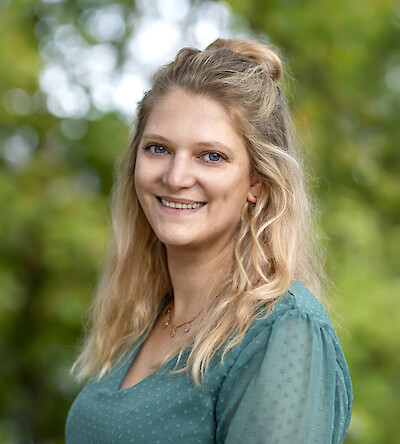
Miriam Seibt
Contact person

